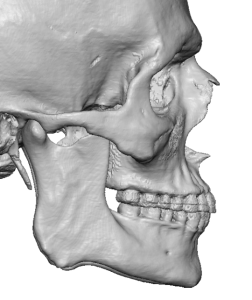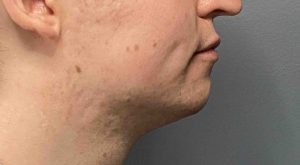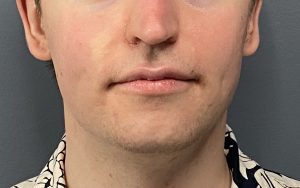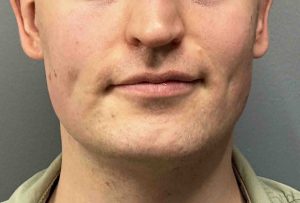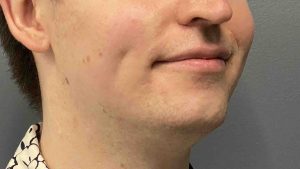Background: A well defined jawline, particularly for a male, is one of the most important facial features. There are many dimensional aspects to what constitutes a well defined jawline but in the end it is a more prominent chin and jaw angle appearance. What differentiates the enhanced jawline is the magnitude of these corner projections as well as how they are connected. The body of the mandible connection can be linear or non linear as well as flat or angled.
Some patients for custom jawline implants have a flat or near flat mandibular plane angle. Besides the horizontal plane angle the chin is often vertically short compared to the length of the jaw angles…which it is why it it flat. The jaw angles usually have very prominent spurs or ligamentous attachments with a square shape to the angles due to strong masseteric muscle pull. This also creates a prominent antegonial notch. Because of its flatness it has a square appearance albeit with a small overall jaw size.
In designing a custom jawline implant for the flat mandibular plane angle patient the question is whether to add vertical chin length or not. In other words to change the mandibular plane angle or leave it as it is. That is a patient’s choice which will influence the shape of the face regardless of the increased size of the lower face.
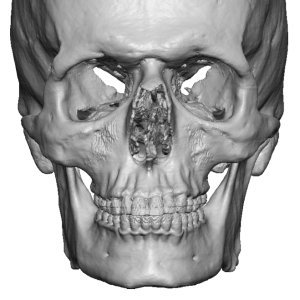
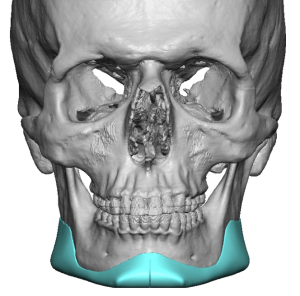
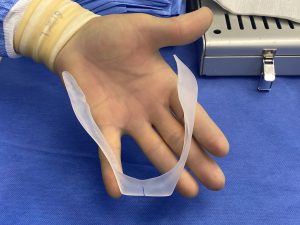
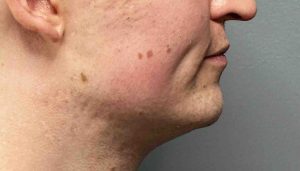
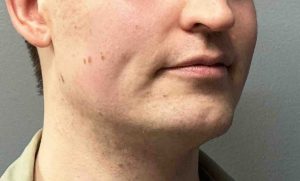
But what brings him back a year later is to seek further augmentation of his chin/jaw size. This is not uncommon. Patients may initially want to be conservative in their lower facial change but wants they get used to it they may wish they have been less conservative initially.
Key Points:
1) The most powerful aesthetic changer of the lower face is the custom jawline implant due to its 3D effects.
2) Patients often want natural result from a custom jawline implant which usually translates to an implant volume in hue mid teen cc range.
3) The flat mandibular plane angle jawline implant keeps the chin and jaw angle lengths close to the same horizontal level.
Dr. Barry Eppley
World-Renowned Plastic Surgeon




